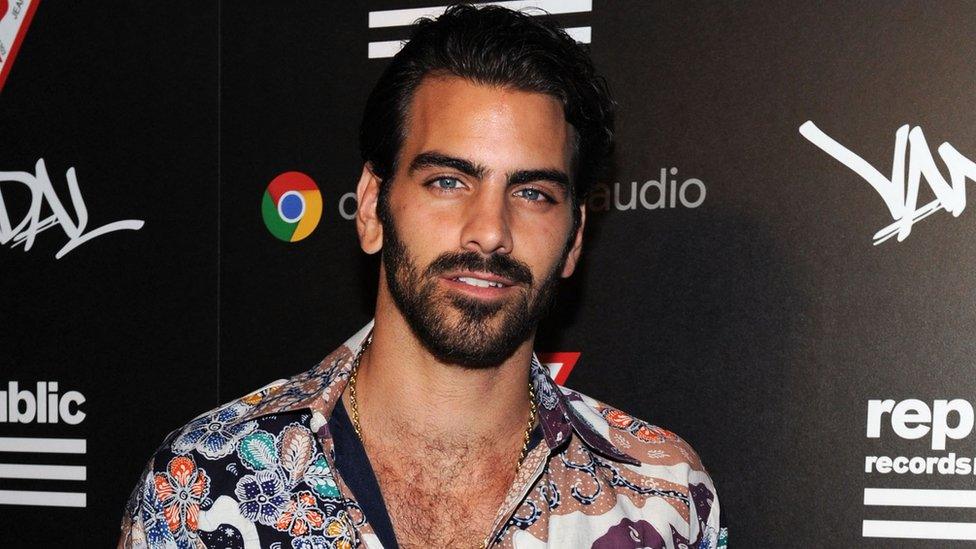London Fashion Week: Is disability hidden in fashion?
- Published
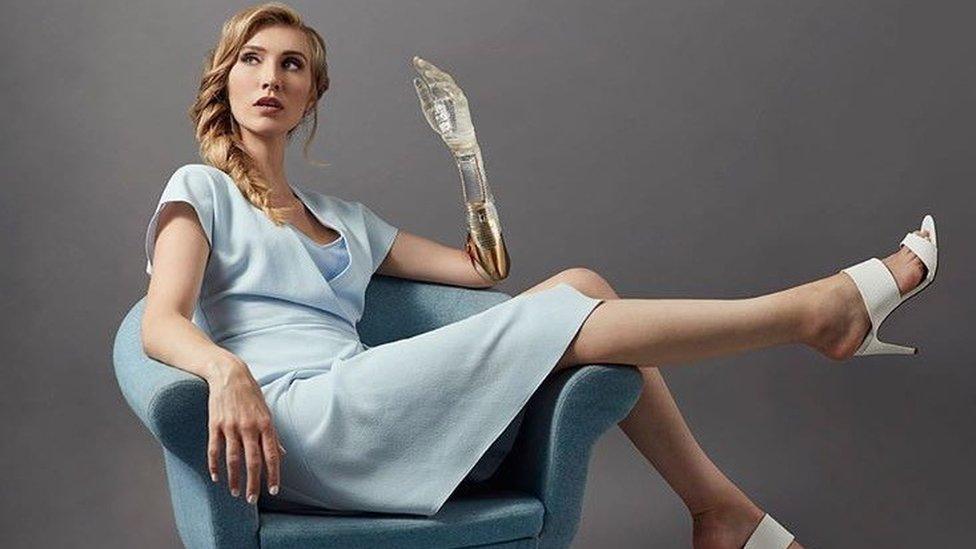
Last year, Kelly Knox became one of the first disabled models to feature at London Fashion Week. Together with BBC Radio 5 live, here Kelly investigates why people with disabilities find it so hard to make it in the fashion industry, external...

I was born without my left forearm.
All my life I've known that my body may be 'missing' a bit, but my soul is whole, all-powerful and limitless.
I never considered myself disabled until I started modelling. In 2008, I beat seven other women with disabilities to win BBC Three's Missing Top Model.
I did not see anybody like me in fashion magazines, advertising campaigns or gracing the catwalk. I could've easily given up, but I don't break that easily!
I wanted to change the way society perceived disability, external and beauty. To make a difference in the world.
But a decade later, not much has changed. We see diversity in terms of shape, size, colour and age, but disability seems the last taboo.
For BBC Radio 5 live, I headed to the London College of Fashion to talk to people from the fashion industry.
Fashion designer Catherine Teatum - one half of the British design duo Teatum Jones - is one of my heroes.
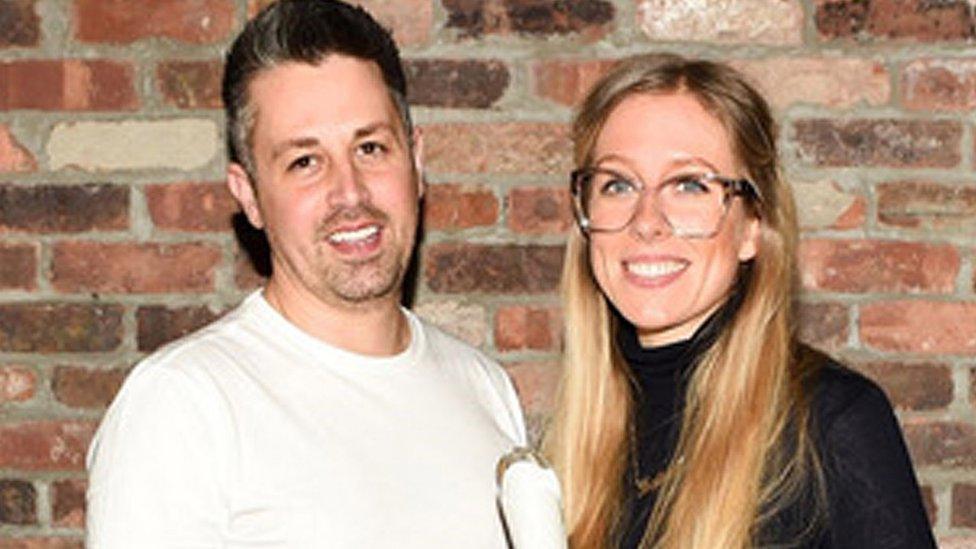
Rob Jones and Catherine Teatum
Last year, she cast me and Jack Eyers, whose leg was amputated when he was 16, for the opening show of London Fashion Week.
Amazingly, it was the first time disabled models had ever appeared at London Fashion Week.
I felt so powerful and strong strutting down the runway wearing their gorgeous creations. One of my career highlights.

Walking for Teatum Jones at LFW was a career highlight
Crammed next to the sewing machines and mannequins in the London College of Fashion, I asked Catherine what she wanted people to feel when she cast Jack and me.
"Seeing you on the catwalk, making a powerful stride down the runway is a powerful image," said Catherine.
"That's something another young girl with a disability who's aspiring to be a model can think, 'Wow, she's doing it. Maybe I can do it too.'
"You don't see that imagery enough."
You may also like:
My next interview was with Caroline Baxter, a fashion journalist and stylist with more than 25 years' experience on glossy magazines.
I wanted to understand why it was so difficult for magazines to use disabled models.
"My job in putting these shoots together is thinking how I can get all these assets in the right place," explained Caroline. "[Sometimes] I've got to get people over three cliffs, down a ravine and over a little bridge to get the perfect shot.
"You have to look at the insurance implications. You have to think about the transport.
"It's not an excuse; it just hasn't come up in conversation."

"My body may be 'missing' a bit, but my soul is whole, all-powerful and limitless" says Knox
Caroline said using a disabled model would also throw up questions for the reader and stop it being about fashion.
"The reader would need an explanation. Who is this person? It would stop being a fashion story."
I questioned why it would become a disability story? Disabled people are human too.
This is why it's so important that people see what it means to be a person with a disability in 2018 - someone who is beautiful, strong, worthy, able and fashionable!
Let's talk about the purple pound. With an estimated 12 million disabled people living in the UK, spending capacity is worth around £249 billion per year to the economy.
It is a large untapped consumer market. I was keen to chat about this with fashion blogger Clara Holmes.
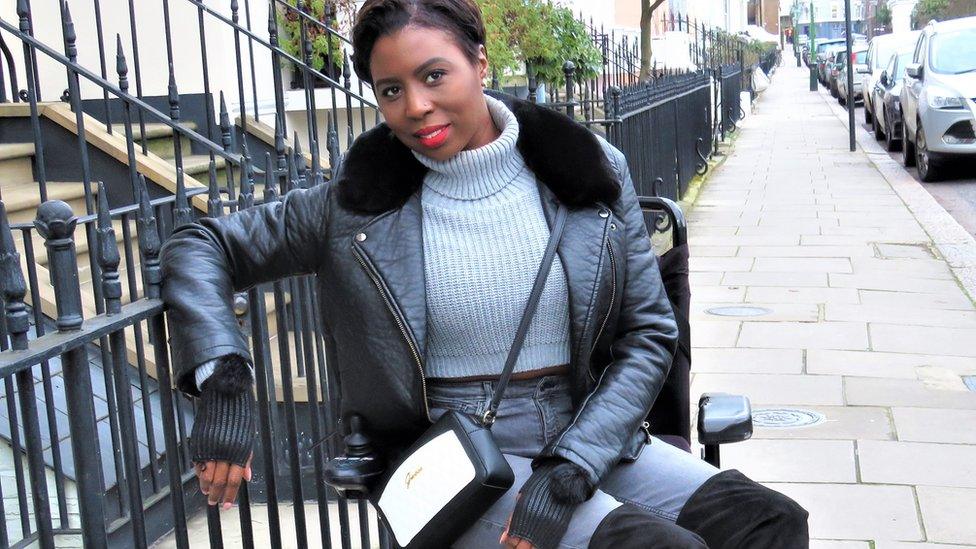
"We should not feel ashamed or guilty about our bodies"
Clara has Ehlers-Danlos Syndrome, a form of Hypermobility Syndrome, which is an inherited connective tissue disorder.
It's a very painful condition and Clara has been a full-time wheelchair user for more than 10 years.
Through her Rollin Funky blog, she charts her adventures in fashion - challenging the idea that disabled people can't be stylish.
Clara told me she had experienced problems if she ventured away from the main shopping areas.
"It's when you start going off the main track, the little boutique-y places down the side streets, that there's a problem: They have a step; there's no ramp, the shop is too narrow.
"I don't want a hoo-ha getting into a shop. I don't want to feel like I've got to buy something because of all the help you've given me getting in.
"I don't want four people lifting up my wheelchair. I don't want a standing ovation. I just want to get in.
"If I face that once, I'm not going to do it again."

Clara Holmes and Kelly Knox call on stores to use models with disabilities in online campaigns
Clara's experience is not unique. A recent study by the Extra Costs Commission has found that 75 per cent of disabled customers have left a shop because of poor service or access, and that British companies risk losing £420m a week in sales.
When it comes to online stores, Clara said the feelings of exclusion come more from the models they choose to use.
"My whole outfit was bought online. Definitely we need to be represented on there. You see models sat down - why can't you have a wheelchair user?
"Why not have disabilities in their online campaigns? It would be the perfect platform."
I completely related to what Clara said.
Our bodies are not an apology. We should not feel ashamed or guilty about them.
We are not going anywhere and deserve representation.
It's now time to embrace people as individuals and celebrate uniqueness, not defining or labelling them by their differences.

Follow us on Facebook, external, on Twitter @BBCNewsEnts, external, or on Instagram at bbcnewsents, external. If you have a story suggestion email entertainment.news@bbc.co.uk.
- Published19 February 2018
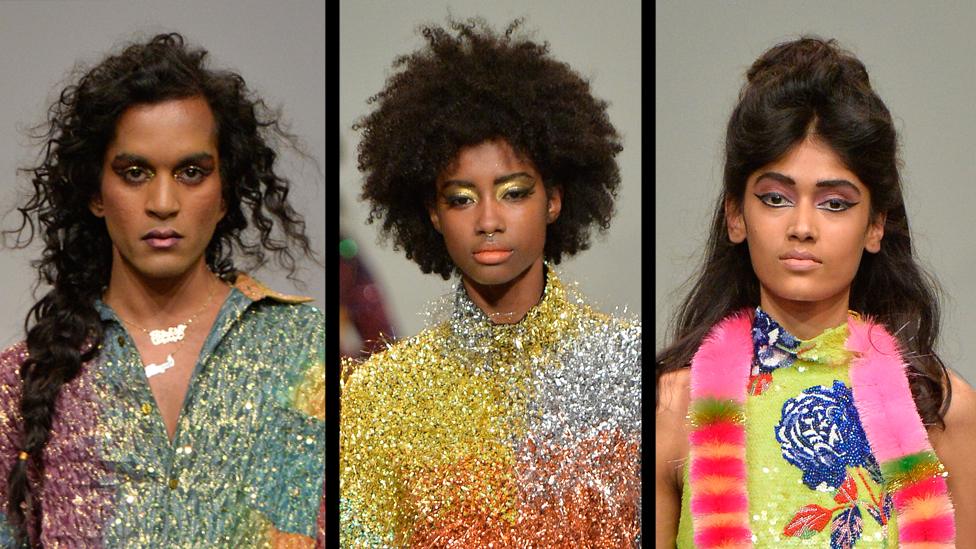
- Published19 February 2018
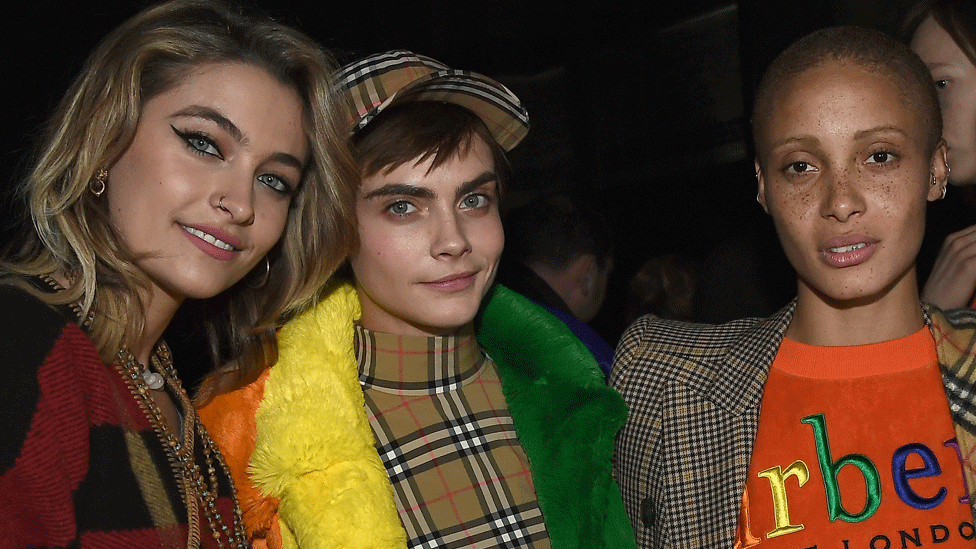
- Published19 February 2018
